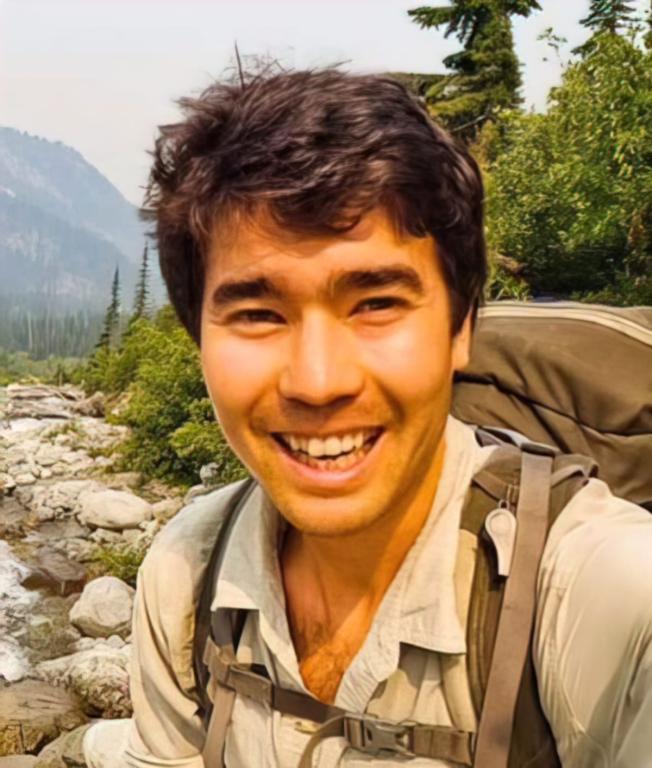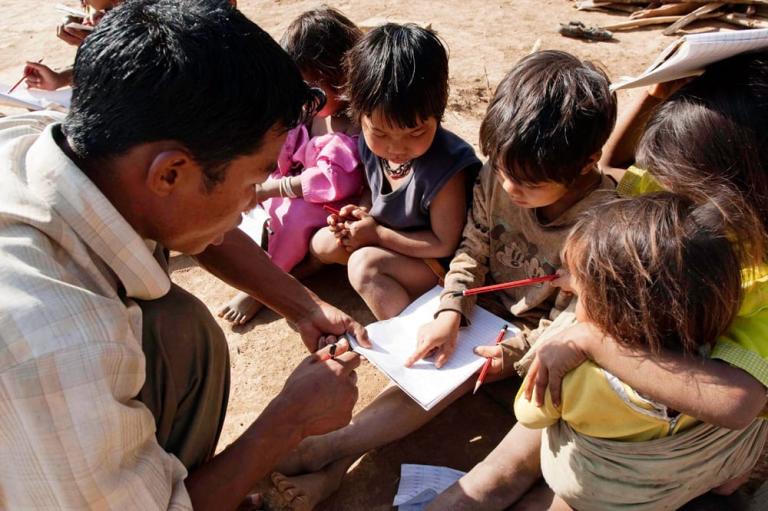WILLS POINT, TX – Gospel for Asia (GFA World and affiliates like Gospel for Asia Canada) founded by KP Yohannan, issued a Special Report on the ugly truths of world hunger: “Scandal of Starvation” — world hunger is a long-term social and global crisis, directly or indirectly causing around 9 million deaths each year – more than AIDS, malaria, and tuberculosis combined.
There are many things wrong with our broken world, from prejudice and violence to modern-day slavery. The United Nations has identified 16 top enemies of humankind, with ambitious aims to tame if not defeat them by 2030. But have you ever paused to wonder what subjects top Jesus’s list of great ills?

Hunger is one of them. Shortly before His betrayal, Jesus spoke to His disciples about the coming judgment, when everyone will appear before Him. He told of those who will inherit the kingdom prepared from the foundation of the world, and why.
“For I was hungry and you gave Me food,” he began (Matthew 25:35). He went on to name the thirsty, the strangers, the naked, the sick, and the imprisoned. Meeting their needs was also a reflection of God’s kingdom, He said. But He recognized empty bellies first.
Perhaps that is because it is hard to hear anything else above the rumble of an empty stomach. Words of hope for a better tomorrow—whether practical advice or spiritual encouragement—tend to fall on deaf ears when someone has eaten little or nothing for too long.
Gospel for Asia (GFA) founder K.P. Yohannan said, “If you see a dying man begging on the street, how can you share the Good News with him and not give him something to eat?”
When hunger muffles your hearing, it’s not because of frustration but physiology. When you are hungry, your body starts to do what it can to conserve energy. Like a computer, it shuts down peripheral programs. In the short term, hunger makes it harder for you to concentrate. Over time, it makes it harder for you to understand. You go from not having the desire to learn to not having the ability.

Consider the student faintings last year that became common at the Augusto D’Aubeterre Lyceum school in Boca de Uchire, Venezuela, in the wake of the country’s severe economic crisis. They occurred because so many students went to class without eating breakfast, or dinner the night before, reported The New York Times. At other schools, children wanted to know if there would be any food before they decided whether to go at all. “You can’t educate skeletal and hungry people,” one teacher said. Hence hunger is not just a desperate and immediate personal issue. It is also a long-term social and global crisis, directly or indirectly causing around 9 million deaths each year—more than AIDS, malaria, and tuberculosis combined. One report has estimated the annual impact on the global economy of malnutrition through lost potential and production to be as much as $3.5 trillion, or $500 for every single person in the world.
That is the financial impact of what Roger Thurow, a Senior Fellow on Global Food and Agriculture at The Chicago Council on Global Affairs, has called malnutrition a “life sentence of underachievement and underperformance.” If you ask why some countries remain poor or why development aid isn’t as effective as possible and doesn’t have the impact many think it should, he said, “it’s because so many kids are getting off to a horrible start in life.”
COVID-19 Accelerates Starvation in Asia

The global COVID-19 pandemic has accelerated hunger fears. Lockdowns and stay-at-home orders brought national economies to a grinding halt overnight, sending unemployment soaring, and instantly plunging hundreds of millions of families into survival mode.
At the grassroots level, millions of furloughed day laborers and agricultural workers—the backbone of the workforce in many developing nations—faced the grim threat of watching their families starve. “These nations are in the hands of God right now,” said Yohannan. “There is a real danger that millions could starve to death.”
In southeast Asia, hundreds of millions of children were immediately at risk, as the lockdown paralyzed entire nations. Huge numbers of street children—estimated at 70,000+ in some cities in Asia alone—had no one to beg from and no one to turn to.
“When a crisis hits, the children are always hit the hardest,” Yohannan said. For more details on this story, go here.
Food Insecurity, World Hunger Are Increasing

In the measured words of officials and academics, those who don’t have enough to eat are victims of “food insecurity,” not knowing if and when they will eat next or whether it will be enough. The impact of hunger is seen in what they call “wasting” and “stunting,” which describe the different ways lack of food keeps someone from developing physically as they should.
In the everyday world, hunger is 5-year-old Meena, who was reduced to begging for scraps from strangers and eating sewage-soaked dirt off the streets of Mumbai, India. Not long after her haunted image was photographed, she went into a coma and died.
It is not only an issue in parts of the world where lack is as clearly obvious, however. People also suffer from hunger in places like Liverpool, England, where one young boy chewed wallpaper at night, not wanting to tell his mother how hungry he was because he knew that she didn’t have any money for supper.
Concerted attempts to eradicate hunger are not new. Though he rallied the collective effort to put a man on the moon in the 1960s, President John F. Kennedy was less successful in achieving another ambitious goal he voiced.
“We have the ability, as members of the human race, we have the means, we have the capacity to eliminate hunger from the face of the earth in our lifetime,” he said. “We need only the will.”
Despite best efforts, from governments to the grassroots, it is not a problem that is going away. Worldwide, hunger increased in 2018 for the third successive year. According to the United Nations’ Food and Agriculture Organization, more than 820 million people did not get enough to eat that year.

The largest concentration of undernourished people is in Asia, especially South Asia, with the region accounting for two-thirds of all the malnourished children in the world. In India, nearly 200 million people are undernourished. The country was ranked 103rd of 119 in the 2018 Global Hunger Index.
According to the UN report, however, Africa “has the highest rates of hunger in the world and [these] are continuing to slowly but steadily rise in almost all subregions.” Indeed, more than a quarter of Africa’s population was classified as food-insecure in 2016, more than four times the rate of any other region. The Global Hunger Index includes six African nations among the ten hungriest worldwide: the Central African Republic, Chad, Madagascar, Zambia, Liberia and Zimbabwe.

“We have the ability, as members of the human race, we have the means, we have the capacity to eliminate hunger from the face of the earth in our lifetime, we need only the will.”
President John F. Kennedy
World Food Congress, June 4, 1963
One small indicator of the seriousness of hunger is that it gets not one but two annual days of international attention. This year’s World Hunger Day (May 28) will focus on “sustainability.” Organized by The Hunger Project, it will emphasize how long-term solutions must address issues interwoven with hunger, such as political instability, the environment and gender inequality. The U.N.’s World Food Day is to be observed October 16, marking the founding of the body’s food and agriculture organization.

World Hunger’s Ugly Truths Revealed
Each year, Gospel for Asia (GFA) workers recognize the U.N. event with a host of special feeding programs. They take food packages to local communities in need—including homeless people who beg by railway and bus stations—and prepare meals for the residents of leprosy colonies who are ostracized and unable to find work.

As Gospel for Asia (GFA) workers provide simple, nutritious food—such as bread, eggs, and bananas, pulse curry and vegetables—they extend a lifeline to people like Lalita. At 32 she had been living by the footpath near a railway station when some of Gospel for Asia (GFA)-supported Sisters of Compassion arrived with food.
“I lost my husband six years ago, after which my family abandoned me, as I am blind,” she told the visitors. “Now, I cannot do any work. Today I am happy that I received this food packet.”
Hunger is ugly on many levels, not least because many of its root causes are human action and inaction—wars, corruption, and environmental mismanagement. Three additional realities make it even more difficult to swallow:
- There is enough food in the world to go around.
- A lot of good food just gets thrown away, some merely because it doesn’t look picture-perfect.
- While millions go hungry because they can’t afford to eat, others spend large amounts of money following fad diets.
Pope Francis called out some of these wrongs in a 2019 World Food Day message: “It is a cruel, unjust and paradoxical reality that, today, there is food for everyone, and yet not everyone has access to it, and that in some areas of the world food is wasted, discarded and consumed in excess, or destined for other purposes than nutrition.”
Improvements in global food production mean that the world produces a harvest big enough to feed everyone on the planet one-and-a-half times over. Yet fully a third of all the food that is produced goes to waste—discarded in production, lost somewhere along the farm-to-table route, or thrown away by end-consumers: restaurants, institutions like hospitals, and families. It has been reckoned that, globally, around $1 trillion worth of food is lost or wasted each year.
Losses before food gets to the consumer are highest in Central and South Asia, reflecting the bigger challenges in the supply chain there. However, North America is high in the overall waste league—some 133 billion pounds each year.
And that’s just considering the immediate value of the food. The wider cost is “a major squandering of resources, including water, land, energy, labor and capital.”
Give Food, Aid to Victims of Hunger & Starvation
Read the rest of Gospel for Asia’s Special Report on The Scandal of Starvation in a World of Plenty: World Hunger’s Ugly Truths Revealed — Part 2, Part 3
This Special Report originally appeared on gfa.org.
Read another Special Report from Gospel for Asia on Poverty: Public Enemy #1 – Eliminating Extreme Poverty Worldwide is Possible, But Not Inevitable.
Learn more by reading this special report from Gospel for Asia: Solutions to Poverty-Line Problems of the Poor & Impoverished — Education’s Impact on Extreme Poverty Eradication.
Click here, to read more blogs on Patheos from Gospel for Asia.
Learn more about Gospel for Asia: Facebook | YouTube | Instagram | LinkedIn | SourceWatch | Integrity | Lawsuit Update | 5 Distinctives | 6 Remarkable Facts | 10 Milestones | Media Room | Scandal of Starvation | Endorsements | 40th Anniversary | Lawsuit Response |
Notable News about Gospel for Asia: FoxNews, ChristianPost, NYPost, MissionsBox







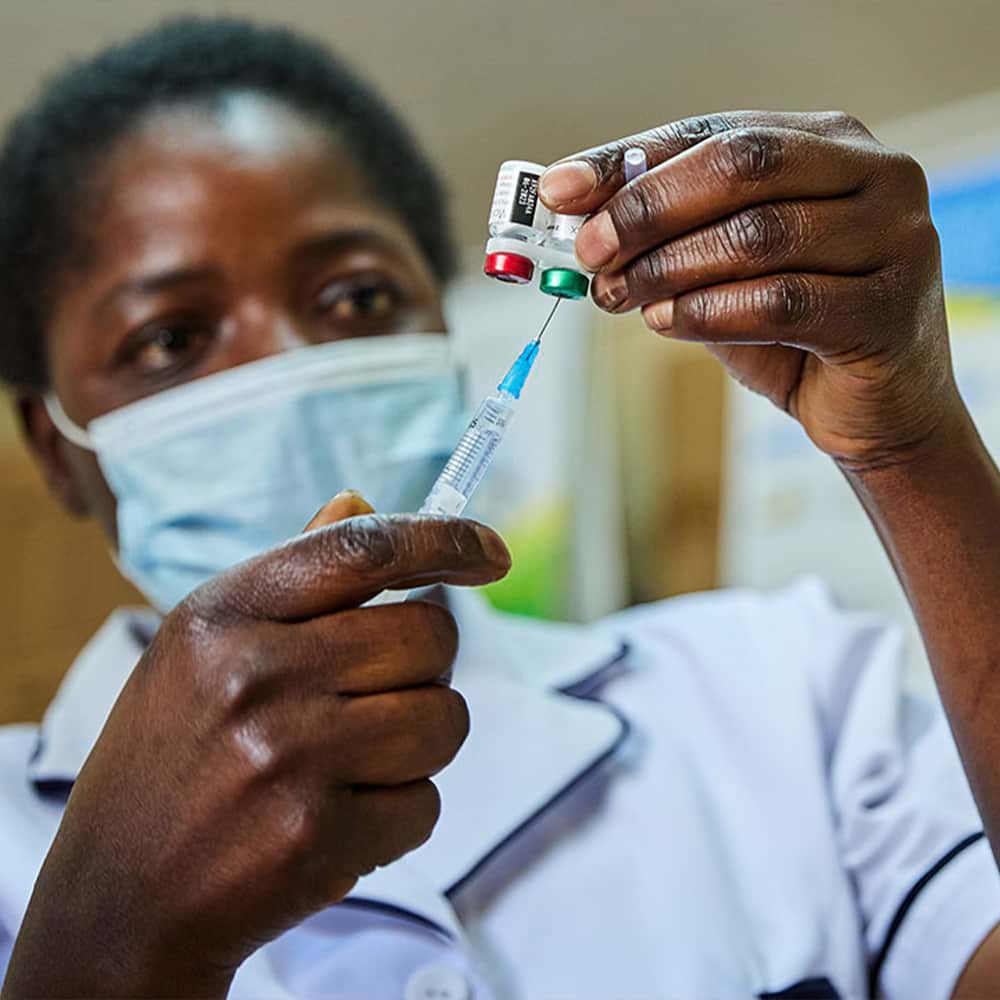












 “Many girls practice prostitution in our cities and even in our churches. Their parents encourage them because they are desperate for food, so they encourage their 15-year-old daughters to have sex to bring in money. It’s a desperation trade: ‘You help me, and I will have sex with you.’”
“Many girls practice prostitution in our cities and even in our churches. Their parents encourage them because they are desperate for food, so they encourage their 15-year-old daughters to have sex to bring in money. It’s a desperation trade: ‘You help me, and I will have sex with you.’”
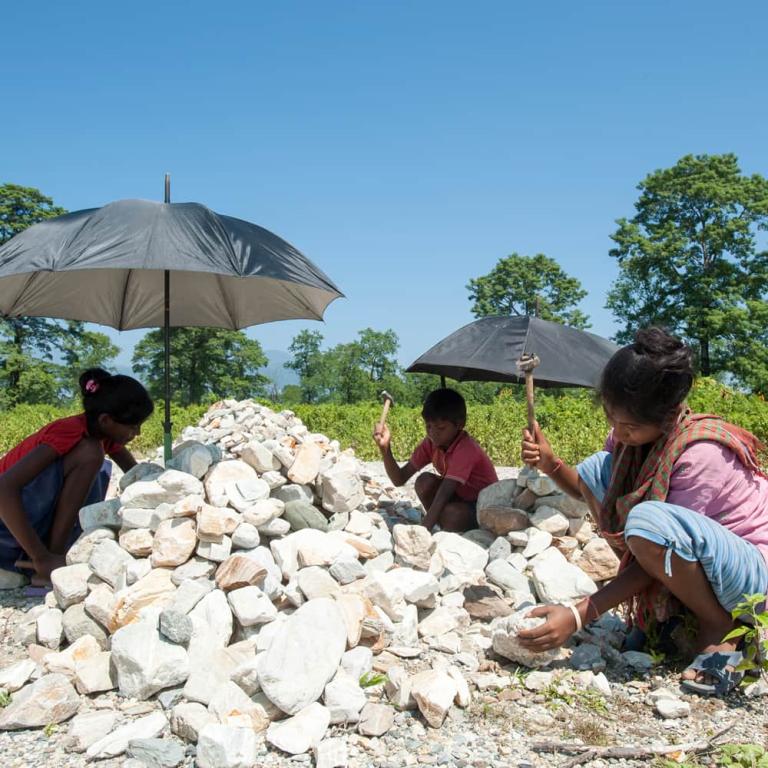





















 But this real-life scene often isn’t what it appears to be. The baby is not hers. She has actually rented the newborn from its mother or guardian so that her pleas for help solicit greater sympathy from passersby.
But this real-life scene often isn’t what it appears to be. The baby is not hers. She has actually rented the newborn from its mother or guardian so that her pleas for help solicit greater sympathy from passersby.



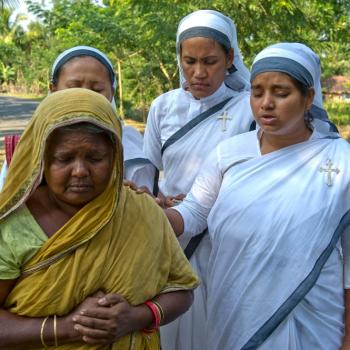


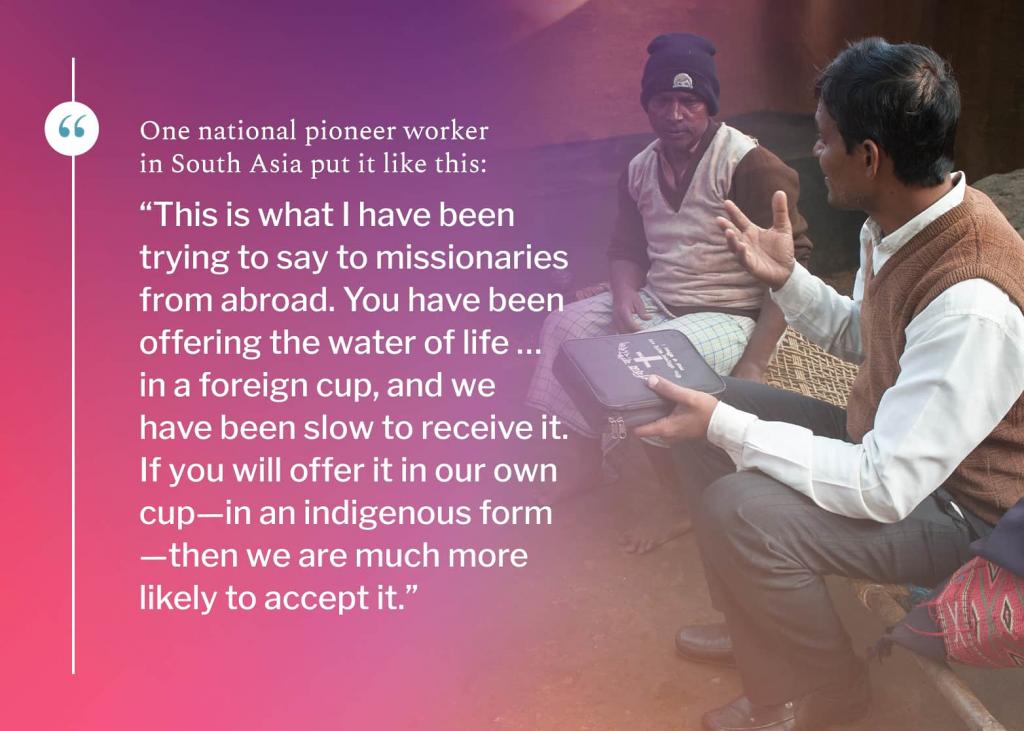
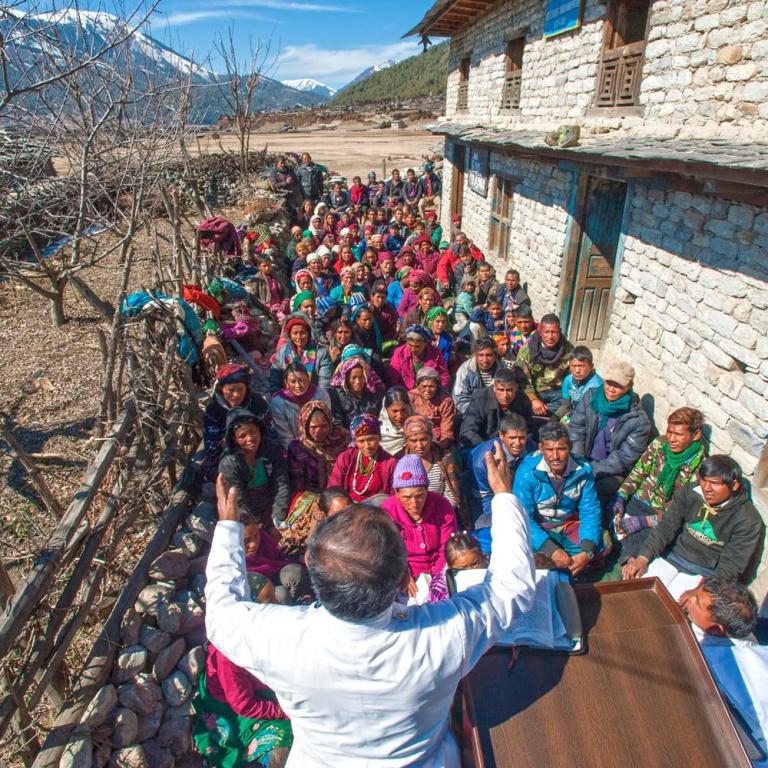
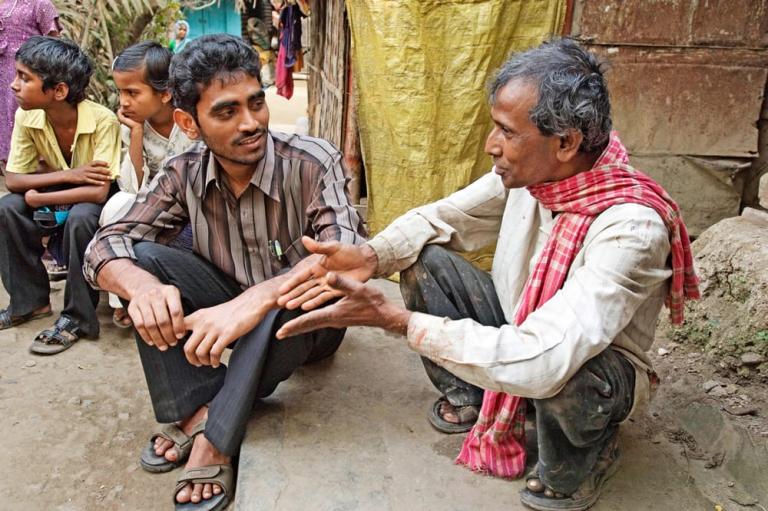

 “The local people wonder why we’re so positive and friendly. … They ask us why,” Thoeun says, explaining it opens the door to tell them about God’s love.
“The local people wonder why we’re so positive and friendly. … They ask us why,” Thoeun says, explaining it opens the door to tell them about God’s love.








![“[National] workers toil to bring healing and hope,” GFA World says. “They touch thousands of lives with the tangible love of God through slum, leprosy, medical and disaster relief ministries. Thanks to them, men, women and children who otherwise might have gone without help … have been blessed with much-needed aid.”](https://wp-media.patheos.com/blogs/sites/792/2021/08/quote-graphic-sisters-of-compassion.jpg)
